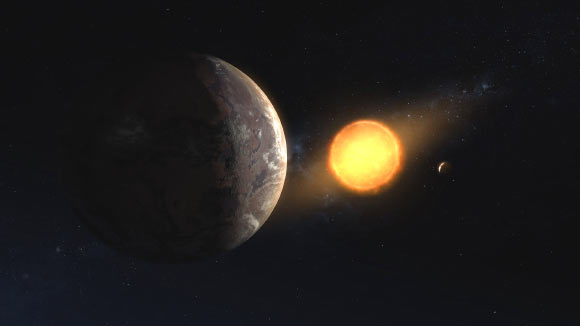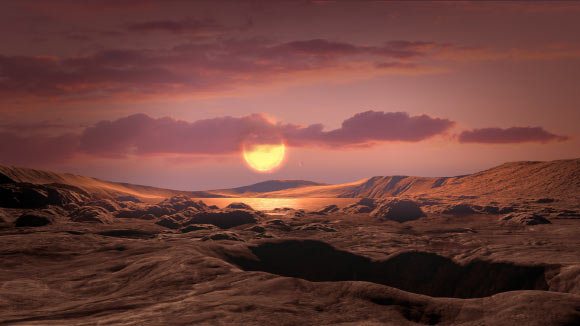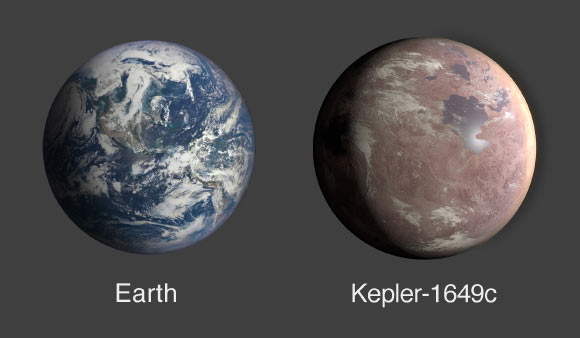Red Dwarf Kepler-1649 Has Earth-Sized Exoplanet in Habitable Zone | Astronomy – Sci-News.com
Astronomers using data from NASA’s Kepler Space Telescope have discovered an Earth-sized planet in the habitable zone of a low-mass star called Kepler-1649.

An illustration of Kepler-1649c orbiting around its host star. Image credit: NASA’s Ames Research Center / Daniel Rutter.
Kepler-1649, also known as KIC 6444896 and KOI-3138, is a red dwarf star located 301 light-years away in the constellation of Cygnus.
Astronomers had previously detected Kepler-1649b, a terrestrial planet that orbits every 8.7 days and is roughly equivalent to Venus in size, around this star.
In a new study, Dr. Andrew Vanderburg from the University of Texas at Austin and colleagues re-analyzed old observations of the Kepler-1649 system made by Kepler.
The double-checking enabled the astronomers to spot one more terrestrial planet around the star.
“Out of all the mislabeled planets we’ve recovered, this one’s particularly exciting — not just because it’s in the habitable zone and Earth-size, but because of how it might interact with the neighboring planet,” Dr. Vanderburg said.
Dubbed Kepler-1649c, the newfound planet is only 1.06 times larger than Earth, and orbits its parent star once only 19.5 days.
The amount of starlight it receives from the star is 75% of the amount of light Earth receives from our Sun, giving it a surface temperature of minus 39 degrees Celsius (minus 38.2 degrees Fahrenheit) and placing it firmly inside the habitable zone.
“The more data we get, the more signs we see pointing to the notion that potentially habitable and Earth-size exoplanets are common around these kinds of stars,” Dr. Vanderburg said.
“With red dwarfs almost everywhere around our Milky Way Galaxy, and these small, potentially habitable and rocky planets around them, the chance one of them isn’t too different than our Earth looks a bit brighter.”

An illustration of what Kepler-1649c could look like from its surface. Image credit: NASA’s Ames Research Center / Daniel Rutter.
“This intriguing, distant world gives us even greater hope that a second Earth lies among the stars, waiting to be found,” said Dr. Thomas Zurbuchen, associate administrator of NASA’s Science Mission Directorate in Washington.
“The data gathered by missions like Kepler and our Transiting Exoplanet Survey Satellite (TESS) will continue to yield amazing discoveries as the science community refines its abilities to look for promising planets year after year.”
The discovery is described in a paper published on April 1, 2020 in the Astrophysical Journal Letters.
_____
Andrew Vanderburg et al. 2020. A Habitable-zone Earth-sized Planet Rescued from False Positive Status. ApJL 893, L27; doi: 10.3847/2041-8213/ab84e5







